Versione italiana sotto l'articolo inglese
The High School Student Internship Programme (HSSIP) is a CERN educational programme for high school students in which they live at CERN for two weeks to attend lectures, visit experiments, and work with scientists.
A key component of this programme is the shadowing event, where groups of two students are assigned to work with scientists on CERN projects for a few days. The GEM (Gas Electron Multiplier) group of the CMS collaboration welcomed Giulia and Alessandro as part of the Italian HSSIP.
“These students were filled with energy, their days were packed full with lectures, shadowing, and events, yet they still had enthusiasm and excitement every time they came into the lab. It reminded me what it was like to be 18 and fascinated about the world around me… I thought about the first time that I badged into CERN and the incredible feeling that I got when I realised that I became part of it.” - Francesco Ivone, PhD student in the GEM group.
GEMs are novel gaseous detectors that track ionising particles like muons. GEMs are being added to the forward regions of the muon system at the CMS experiment, where there are large radiation doses and high event rates. These rates will increase during the next phase of the Large Hadron Collider (LHC) and the GEMs will be crucial for properly detecting muons. The Italian high school students became part of the team producing and testing these detectors.
During six days of work, they collaborated with GEM scientists where they were exposed to the technical aspects of the project and, even more importantly, to the typical day in the life of a CERN physicist.
On day one of the course, the students learned their most “important” lesson which they repeated during their final presentation
“Ovviamente, CMS is the best experiment and GEMs are the best detector!” - Giulia and Alessandro
Then, they continued with an introduction to the GEM technology and a tour of the laboratory.

CMS GEMs will be installed in three locations that require different detector designs. The first ring is already installed in CMS while the other two are currently in production and in an advanced R&D phase. Giulia and Alessandro helped produce and test the detectors currently under development and took part in the operation of the detectors installed in CMS.
The key feature of the GEM detectors is the GEM foil which consists of an insulating polymer surrounded on the top and bottom by conductors. Throughout this foil, microscopic holes are etched. These microscopic structures are very sensitive to dust. Therefore, GEM chambers must be assembled in a clean room, a special laboratory with controlled atmosphere and conditions that minimise the presence of dust.
The students participated in the process by cleaning the GEM foils with an anti-static roller and testing the foils at high voltage.
“The carefully thought out procedure for cleaning the foils is interesting and the actual process is fun… for the first 30 minutes.” - commented Giulia and Alessandro (Don’t worry guys, more fun came later!)

When an ionising particle travels through the detector, it creates electron-ion pairs in the gas. The electrons drift to the GEM foils and are accelerated in the holes where they create more electron-ion pairs. This “multiplication” results in an electron cloud that induces a detectable signal. The electron multiplication factor is evaluated using x-rays inside a copper box meant to prevent x-ray leakage. Giulia and Alessandro contributed to this step by studying the characteristics of the signals produced in a GEM chamber by x-rays.

Once the chambers are characterised, they’re ready to be equipped with electronics for reading out the data. The electronics need to be properly calibrated and operated before a chamber is ready for the CMS experiment. The students participated in this task by performing calibration scans on a GEM chamber.
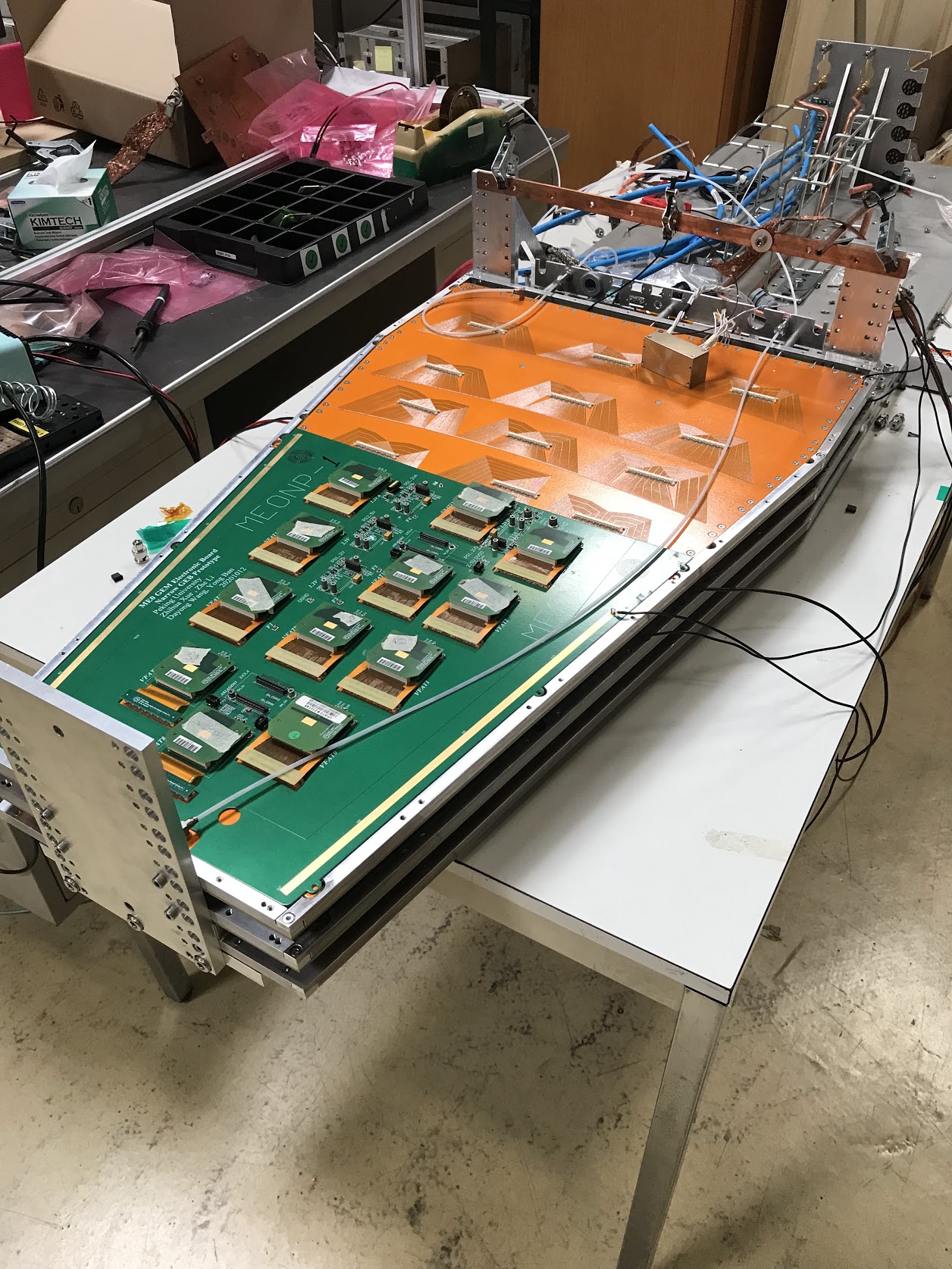
During the advanced R&D phase, a few chambers are studied in a “test” beam coming from the acceleration chain of the LHC. This is a proton beam fired against a fixed target to produce muons and pions. These particles are then carefully filtered and collimated, and finally aimed at the GEM detectors. This process is used to study the electronics and the overall detector performance. Giulia and Alessandro explored the test beam facility with Federica Simone while the beam was off and while she prepared the GEM setup for more studies.
“Working with high school students is a continuous source of surprises for two reasons: their young age and lack of a High Energy Physics background. These two factors allow them to notice small details that I don’t notice anymore. In their eyes, every single part of any experimental setup is equally new and, therefore, worth asking about. The students even asked questions that made me say ‘I don’t know’. I am pretty sure that we learn more from their eyes than they learn from us.” - Federica Simone, postdoc in the GEM group.
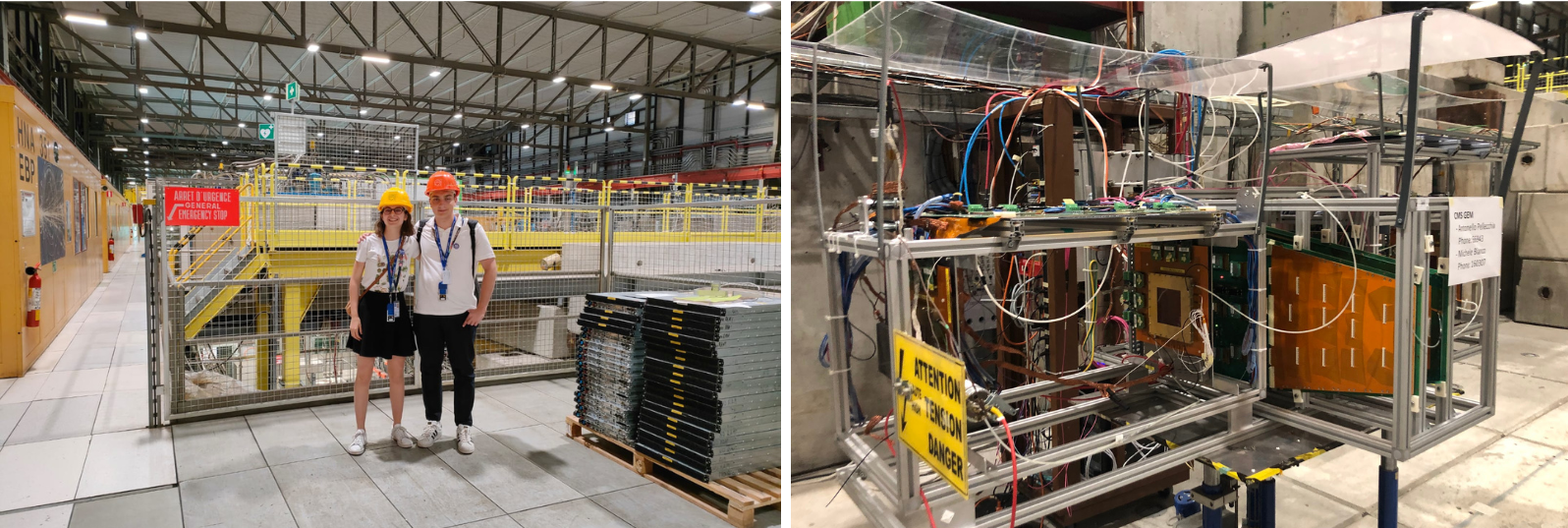
When mass production is finished, the chambers are installed in the CMS experiment during LHC Long Shutdowns. The first GEM chambers were installed at CMS in 2019-2020 and are beginning operation right now for LHC Run-3. Giulia and Alessandro had the chance to visit the CMS control room and observe how these chambers are operated at the CMS experiment.
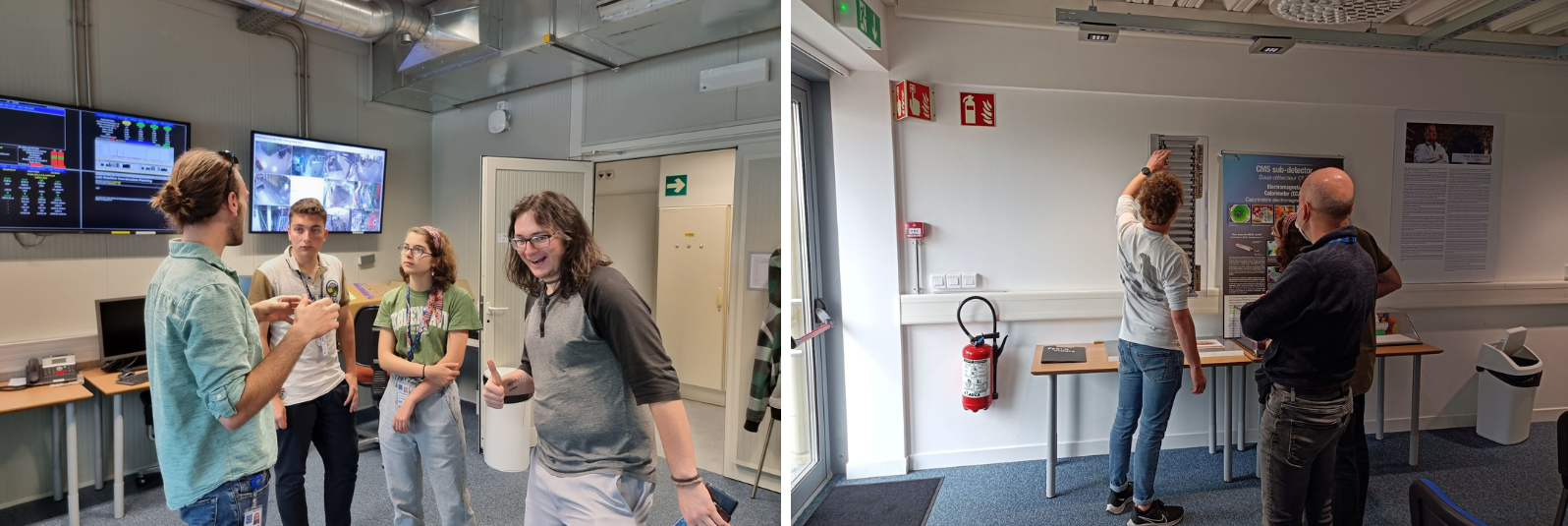
The GEM detectors will be a part of the CMS experiment for a long time and the success of this project depends on a number of dedicated scientists and students. So, we hope that one day these two high school students will return to the GEM project as physicists with the same enthusiasm!

Bravissimi e congratulazioni to Alessandro and Giulia, the two students of the GEM lab! We wish you the best in your future careers!
VERSIONE ITALIANA
Il "High School Student Internship Programme" (HSSIP) e' un progamma educativo per studenti di scuola superiore promosso dal CERN. Si tratta di un progetto pilota lanciato dal CERN nel 2017 in stretta collaborazione con il suoi stati membri. Ad oggi, 22 gruppi di studenti provenienti dagli stati membri dell'organizzazione hanno avuto la possibilita' di passare due settimane al CERN e vivere cosa significa lavorare in un'organizzazione scientifica internazionale. Durante la loro permanenza, i ragazzi hanno avuto la possibilita' di seguire lezioni, laboratori didattici, visite e seguire personale e utenti del CERN nel loro lavoro quotidiano.
La fase pilota dell'HSSIP si è conclusa nel 2022 con gli ultimi due programmi, quello per l'Italia e quello per la Serbia.
Componente chiave del programma è l’affiancamento di coppie di studenti a gruppi di ricercatori, che permette loro di lavorare per alcuni giorni su veri progetti CERN. Il gruppo GEM (Gas Electron Multiplier) dell’esperimento CMS ha accolto due studenti del programma italiano HSSIP, Giulia e Alessandro.
“Gli studenti erano pieni di energia; le loro giornate erano piene di lezioni, lavoro ed eventi, ma loro erano comunque sempre pieni di emozione ed entusiasmo nel venire in laboratorio. Questo mi ha ricordato come ero io a diciott’anni: affascinato del mondo attorno a me… Ho pensato alla prima volta che ho passato il badge per entrare al CERN, e l’incredibile emozione che ho provato quando ho realizzato che ne ero parte.” - Francesco Ivone, studente di dottorato nel gruppo GEM.
Le GEM sono rivelatori a gas di recente invenzione, utilizzate per il tracciamento di particelle ionizzanti. Nell’esperimento CMS i rivelatori GEM vengono aggiunti al sistema a muoni dove sono presenti elevate dosi di radiazioni ed alta frequenza di eventi. Quest’ultima sarà ulteriormente aumentata nella prossima fase del Large Hadron Collider, rendendo le GEM necessarie alla corretta rivelazione e ricostruzione dei muoni. Nel corso del programma HSSIP, i due fortunati studenti sono divenuti parte del team di costruzione e test di questi rivelatori.
Durante i sei giorni di lavoro, hanno collaborato con il gruppo GEM, sono venuti a contatto con gli aspetti tecnici del progetto, ma soprattutto hanno potuto sperimentare una tipica giornata di lavoro di uno scienziato al CERN.
Durante il primo giorno, gli studenti hanno imparato la lezione più importante, che hanno poi riportato durante la loro presentazione finale
“Obviously, CMS è il ‘miglior esperimento’ e le GEM sono il miglior rivelatore!” - Giulia e Alessandro
Gli studenti hanno iniziato la loro esperienza con un’introduzione alla tecnologia GEM e con un tour del laboratorio.
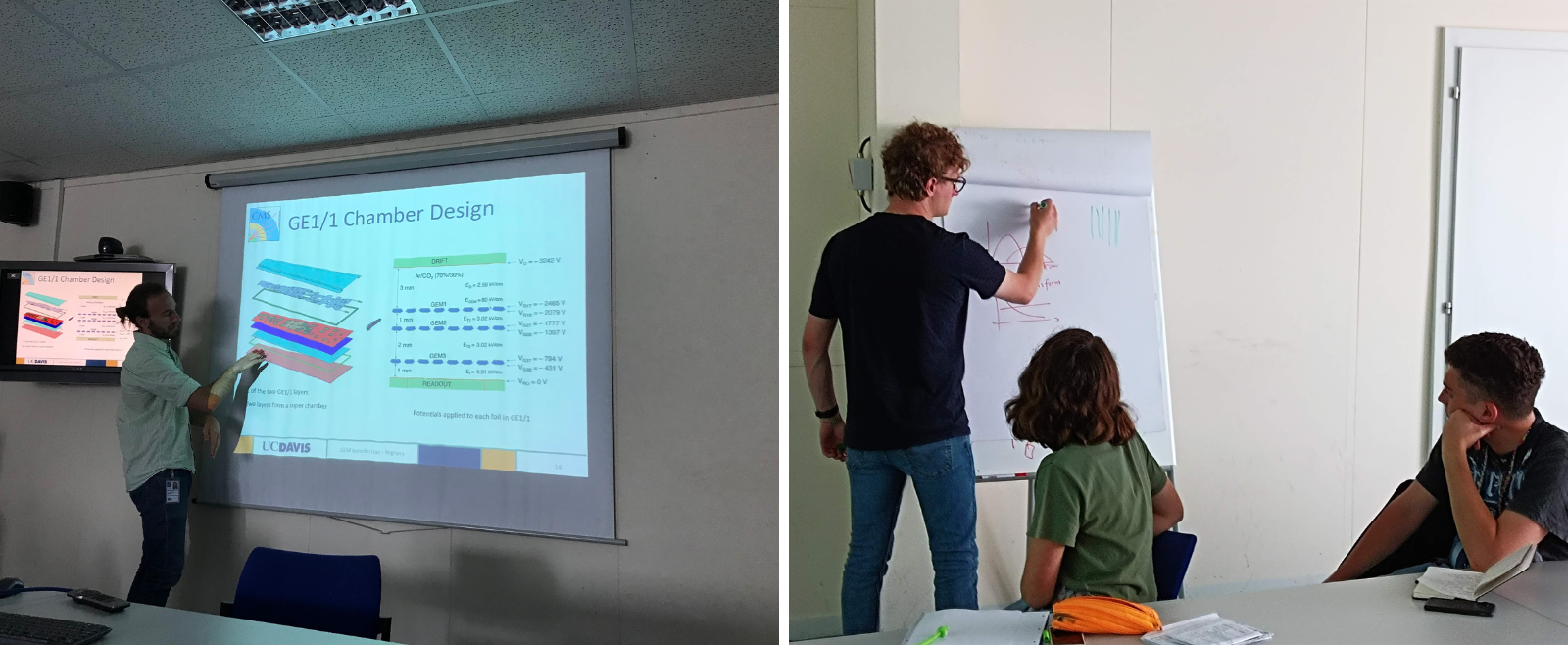
Le camere GEM verranno installate in tre regioni in CMS, con tre specifici design. Il primo anello di rivelatori è già stato installato in CMS, mentre gli altri due sono rispettivamente in produzione e in fase avanzata di sviluppo. Giulia e Alessandro hanno contribuito alla produzione e ai test dei nuovi rivelatori e hanno preso parte alle operazioni dei rivelatori installati in CMS.
La principale caratteristica dei rivelatori GEM sono i fogli GEM, che consistono in un polimero isolante di spessore 50 micron rivestito da due sottili strati di rame attraverso il quale sono creati micro-fori. Le micro-strutture nei fogli sono molto sensibili alla polvere. Di conseguenza, le camere sono assemblate in camera pulita, uno speciale laboratorio con atmosfera controllata e una minima presenza di polvere.
Gli studenti hanno partecipato al processo di pulizia dei fogli GEM con un rullo antistatico, e ai test dei fogli sotto alta tensione.
“Le minuziose procedure di pulizia dei fogli sono interessanti e il processo di pulizia è divertente… per i primi 30 minuti.” - hanno commentato Giulia e Alessandro (Non vi spaventate, si sono divertiti molto nei giorni successivi!)
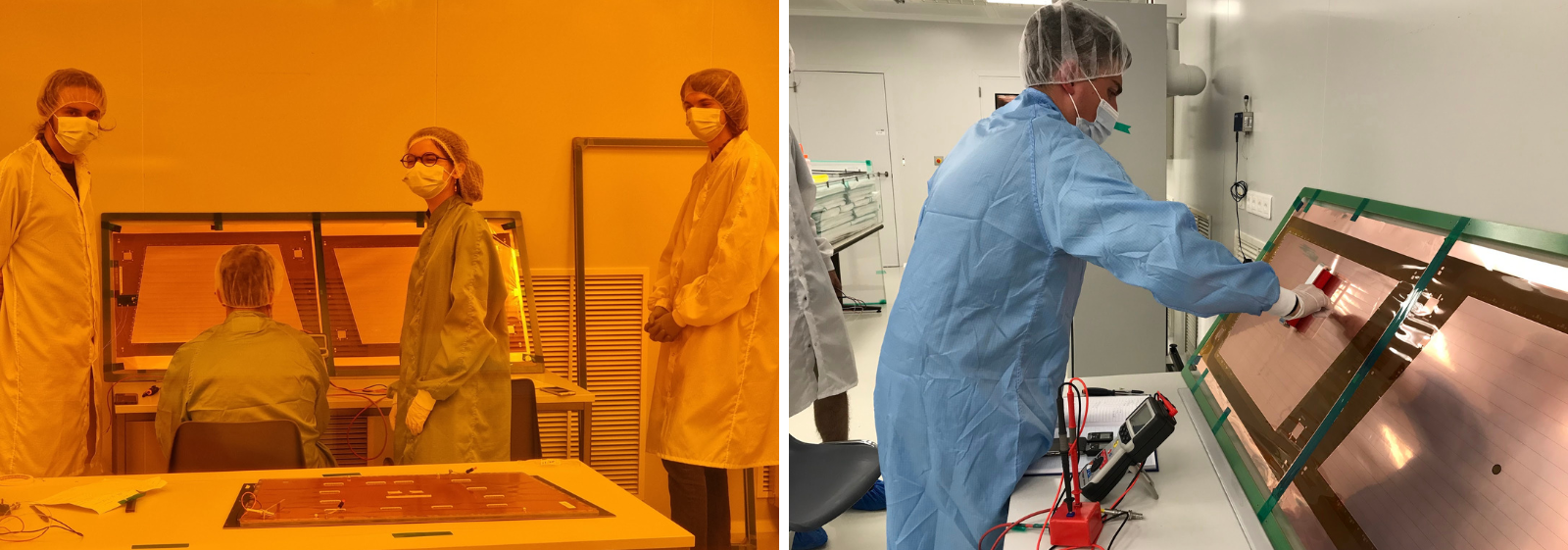
Quando una particella ionizzante attraversa il rivelatore, vengono prodotte coppie elettrone-ione nel gas. Gli elettroni sono attratti verso i fogli GEM, vengono accelerati nei fori e lì danno luogo ad altre coppie elettrone-ione. Questa moltiplicazione genera una nuvola di elettroni che, infine, induce un segnale rilevabile. Il fattore di moltiplicazione degli elettroni viene misurato utilizzando raggi-x all’interno di un box di rame, atto a schermare gli ambienti del laboratorio dai raggi-x. Giulia e Alessandro hanno contribuito a questo test studiando le caratteristiche dei segnali prodotti dai raggi-x in una camera GEM.
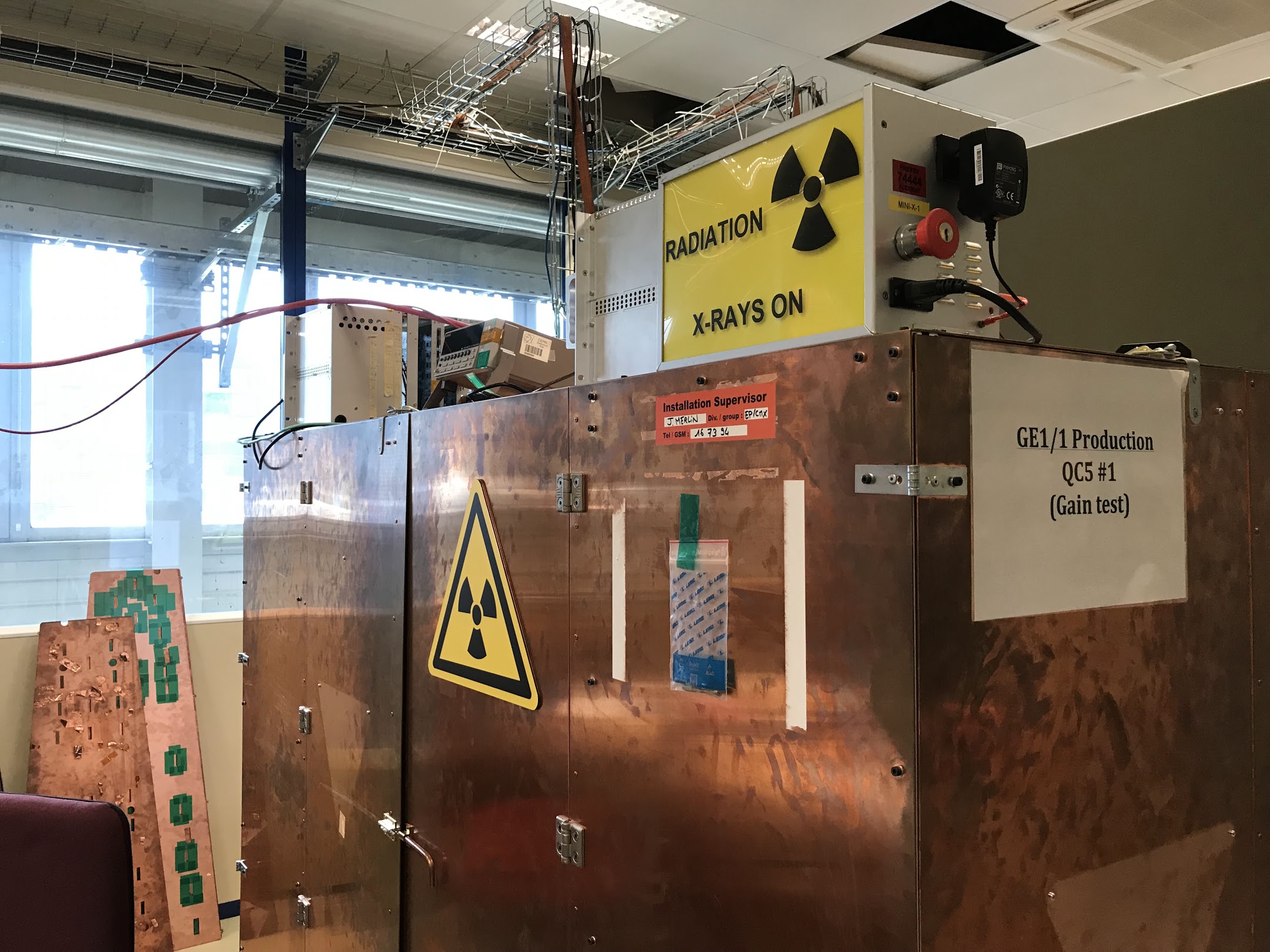
Una volta che le camere sono state caratterizzate, sono pronte per essere equipaggiate con l’elettronica di lettura dei segnali. L’elettronica dev’essere adeguatamente calibrata e testata prima che una camera sia dichiarata pronta per l’installazione nell’esperimento. Gli studenti hanno partecipato a questo processo, calibrando l’elettronica di una camera GEM.
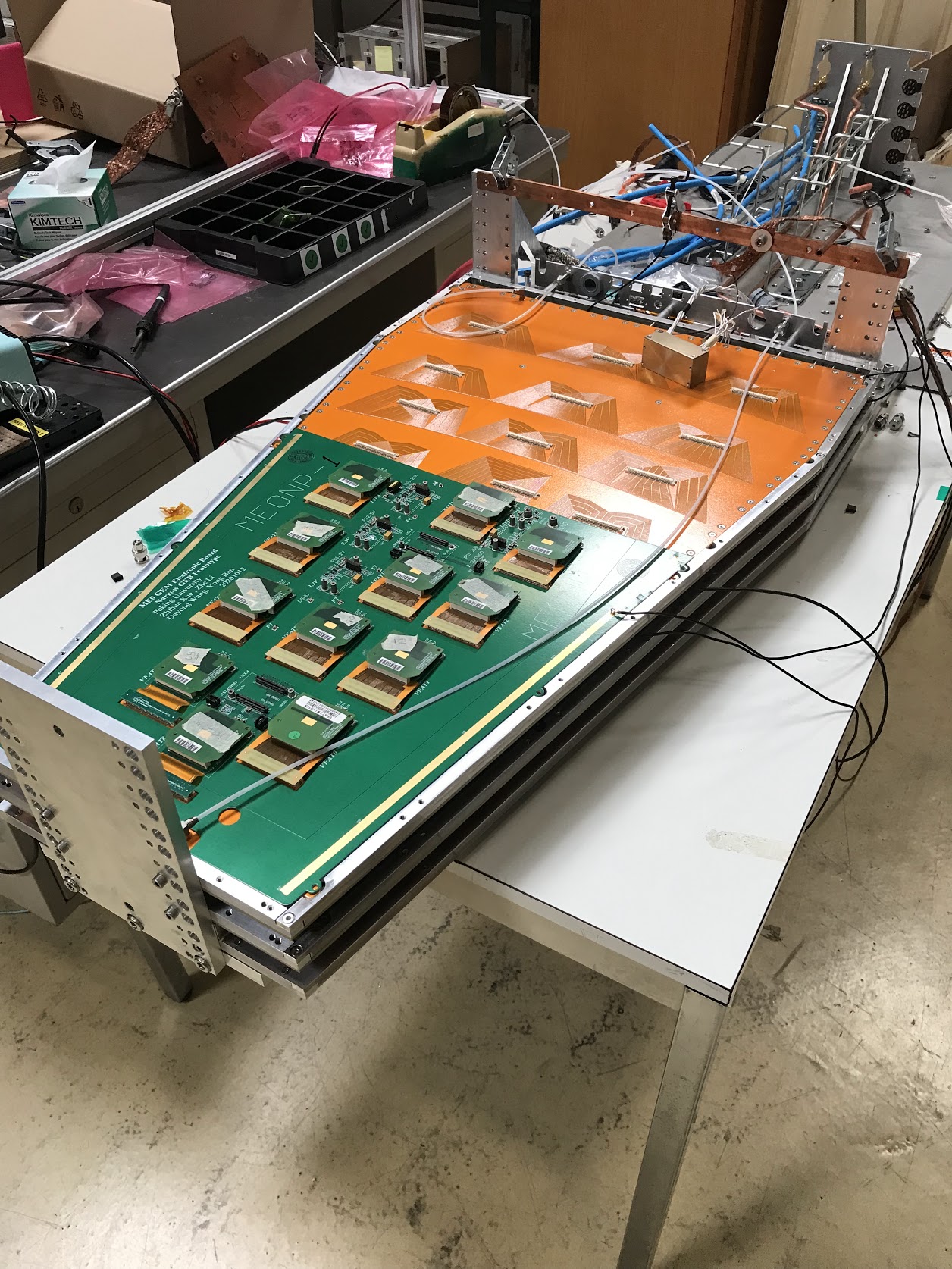
Durante la fase avanzata di sviluppo dei rivelatori, il funzionamento di alcune camere viene provato con un fascio di test (test beam) proveniente dalla catena di accelerazione di LHC (da SPS). Un fascio di protoni viene estratto e fatto collidere con un bersaglio fisso per produrre muoni e pioni. Queste particelle sono filtrate e collimate prima di arrivare ai rivelatori sotto test. I principali obiettivi sono provare il corretto funzionamento dell’elettronica e valutare le performance delle camere nella rivelazione di particelle. Durante una pausa dalle attività con i fasci, Giulia e Alessandro hanno visitato la struttura del test beam con Federica Simone, mentre stava preparando l'apparato GEM per i successivi studi.
“Lavorare con studenti delle scuole superiori è una continua fonte di sorprese per due ragioni: la loro giovane età e la loro mancanza di un background in fisica delle alte energie. Questi due fattori hanno permesso loro di notare ogni piccolo dettaglio, che a me oramai passa inosservato. Spesso, non vedo nulla di interessante in quei dettagli. Ai loro occhi, invece, ogni singola parte dell’apparato sperimentale è ugualmente nuova, e dunque degna di nota e di approfondimento. Ci sono persino state domande a cui ho dovuto rispondere “non lo so”. Sono sicura che impariamo di più dai loro occhi di quanto imparino loro da noi.” - Federica Simone, postdoc nel gruppo GEM.
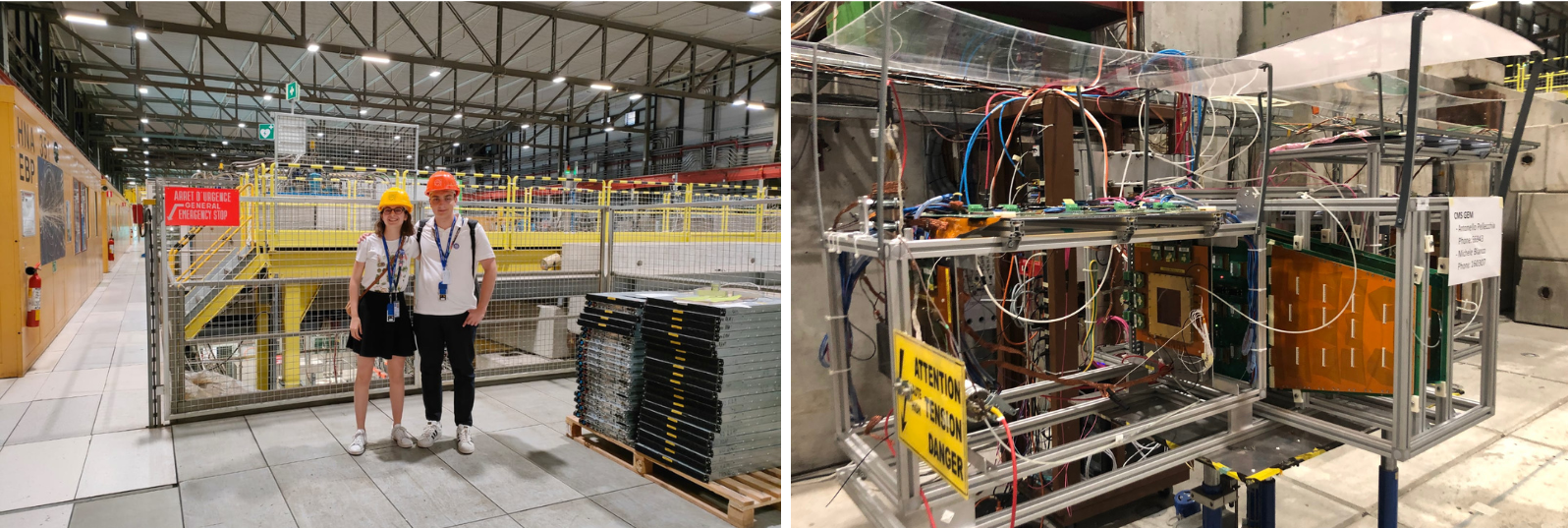
Quando la produzione è terminata, le camere possono essere installate. Ciò avviene durante i periodi di Long Shutdown di LHC; delle lunghe pause tecniche che permettono lavori di manutenzione e di miglioramento ad acceleratori ed esperimenti. Il primo sistema GEM è stato installato nel 2019-2020, e ora stanno iniziando le operazioni per il Run-3 di LHC. Giulia e Alessandro hanno avuto l’opportunità di visitare la sala di controllo di CMS e di osservare come le GEM sono operate nell’esperimento.

I rivelatori GEM saranno parte dell’esperimento CMS per lungo tempo; il successo di questo progetto è nelle mani di ricercatori e studenti appassionati, presenti e futuri. Speriamo con tutto il cuore che un giorno questi due studenti ritornino nel gruppo GEM come fisici, con lo stesso entusiasmo!
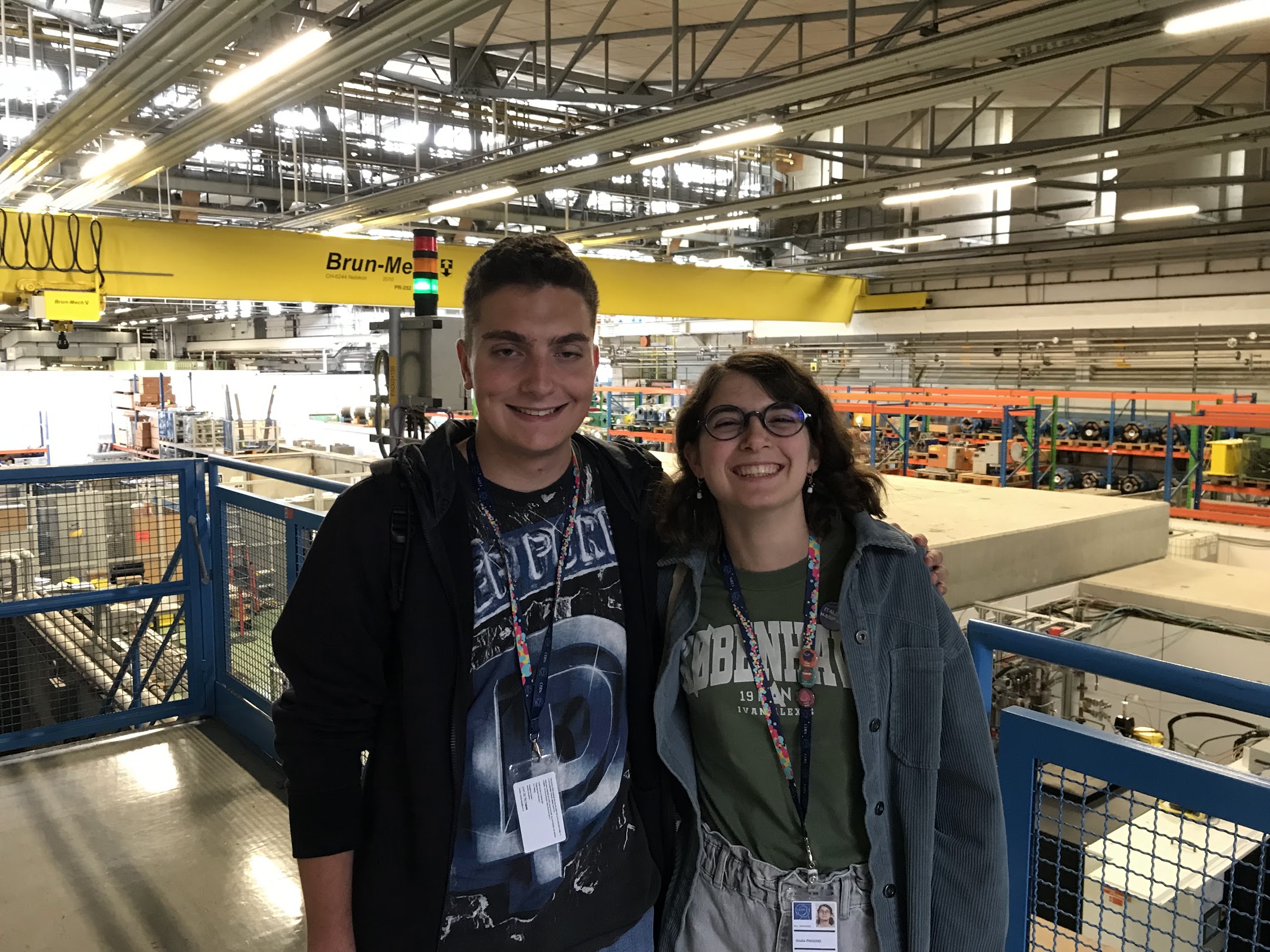
Bravissimi e congratulazioni ai due studenti del GEM lab! Vi auguriamo tutto il meglio per le vostre future carriere!
Grazie to the GEM team who devoted their time in the laboratory to work with these students:
Giovanni Mocellin
Brendan Regnery
Federica Simone
Francesco Ivone
Jeremie Merlin
Viviana Mele
Caterina Aruta
Davide Fiorina
Sam Abbott
Manuel Alejandro Rodriguez Giraldo
Arthur Dedieu
Daniel Teyssier
Archana Sharma
Grazie mille to the organisers of this fantastic event:
Margherita Boselli
Pierluigi Paolucci
Antonella Del Rosso
Francesca Cavallari
Kristina Fortunova
Disclaimer: The views expressed in CMS blogs are personal views of the author and do not necessarily represent official views of the CMS collaboration.
